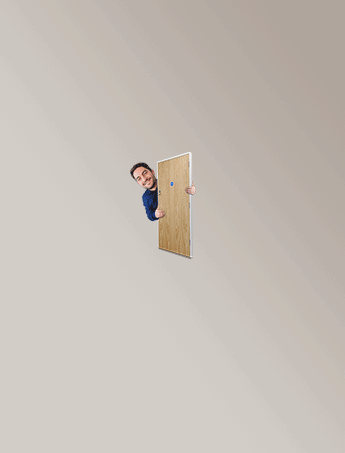The integration of technology into modern living spaces has revolutionised home design, with gaming rooms emerging as a key feature in contemporary architecture. As gaming culture continues to thrive, fuelled by the rise of eSports, virtual reality (VR), and next-generation gaming consoles, homeowners are increasingly seeking dedicated spaces tailored for immersive digital entertainment.
Architects and interior designers are now adapting to this demand by incorporating specialised gaming rooms that blend technology, functionality, and aesthetics. From soundproofed eSports arenas to custom RGB-lit gaming pods, gaming spaces are no longer confined to a desk in the corner of a bedroom but are instead becoming a central focus in modern home layouts.
The Growing Demand for Gaming-Focused Home Design
Gaming has evolved from a niche hobby into a mainstream form of entertainment, with the industry projected to reach $584 billion by 2030. The increased popularity of game streaming, professional eSports tournaments, and multiplayer gaming has led to a shift in home design trends.
One of the biggest factors driving this demand is the increasing amount of time players spend on gaming platforms. Online multiplayer games, live-service titles, and online gambling platforms are becoming increasingly more prevalent among local gamers. According to iGaming expert Robert Blake, non GamStop casinos for UK gambling enthusiasts are now especially popular and offer a range of benefits from faster payouts to crypto betting and players bonuses.
On the other hand, competitive eSports games encourage prolonged gaming sessions, with players in many cases logging in for hours at a time. Popular titles like Fortnite, Call of Duty: Warzone, League of Legends, and Apex Legends are designed with continuous engagement loops, daily challenges, and social features that keep players immersed.
Similarly, MMORPGs and sandbox games like World of Warcraft, Genshin Impact, and Minecraft foster long play sessions by offering expansive virtual worlds, community-driven content, and progression-based gameplay. The rise of live-streaming and content creation on platforms like Twitch and YouTube Gaming further contributes to extended screen time, as many gamers stream for hours or binge-watch live eSports events.
As a result, developers and architects are integrating dedicated gaming rooms into floor plans, catering to homeowners who prioritise gaming as part of their lifestyle. This trend aligns with the broader movement toward personalised home spaces, where entertainment zones, home cinemas, and gaming suites coexist with traditional living areas.
Key Drivers of Gaming Room Popularity
- The Rise of eSports and Streaming: More homeowners are setting up professional-grade gaming spaces to stream content on platforms like Twitch and YouTube.
- Technological Advancements: High-performance gaming setups now require advanced cooling, ergonomic furniture, and immersive audio-visual systems, making dedicated rooms essential.
- Wellness and Ergonomics: The push for ergonomic gaming furniture and improved posture awareness is driving demand for customised seating and desk arrangements.
- Smart Home Integration: Gaming rooms now feature voice-activated lighting, AI-controlled temperature settings, and automated soundproofing, blending seamlessly with smart home ecosystems.
Design Trends in Modern Gaming Rooms
Acoustic Optimisation & Soundproofing
Sound management is a key factor in gaming room design. To enhance immersion while minimising household disturbances, architects incorporate soundproof drywall, double-glazed windows, and acoustic panels. Directional speakers and noise-cancelling technologies further improve audio clarity.
Immersive Lighting & Aesthetic Design
RGB lighting and futuristic decor play a vital role in creating immersive gaming spaces. Smart LED strips and Nanoleaf panels sync with gameplay, while cyberpunk, sci-fi, and retro-inspired wall art enhance aesthetics. Adjustable mood lighting allows users to switch between ambient relaxation and high-energy eSports settings.
Multi-Purpose Gaming and Entertainment Spaces
Gaming rooms are increasingly designed as hybrid spaces that function as home cinemas, streaming studios, and workstations. Features like retractable gaming stations, motorised projector screens, and convertible desks allow seamless transitions between gaming, work, and entertainment.
Custom Furniture & Ergonomic Design
Long gaming sessions require ergonomic furniture for comfort and support. Adjustable gaming desks, ergonomic gaming chairs with lumbar support, and built-in storage solutions ensure an efficient, clutter-free setup. These elements enhance functionality while maintaining a sleek, modern aesthetic.
Modern gaming rooms blend technology, comfort, and design, catering to an evolving gaming culture that values both performance and style.
How Developers Are Adapting
Luxury Residences & Gaming-Optimised Homes
High-end property developers are already incorporating gaming spaces into luxury apartments and smart homes. Some upscale residences now feature pre-designed gaming lounges with high-speed internet infrastructure, built-in soundproofing, and eSports-ready setups.
Gaming-Inspired Home Renovations
Many homeowners are investing in home renovations to create dedicated gaming spaces. Popular renovation projects include converting basements, attics, and spare rooms into immersive gaming suites with custom lighting, ergonomic furniture, and acoustic treatments.
The Future of Gaming Rooms in Home Design
As the gaming industry continues to expand, architects and interior designers will play an increasingly crucial role in creating spaces that cater to digital entertainment needs. The evolution of cloud gaming, 8K displays, and haptic feedback technology will further shape gaming room design trends.
Looking ahead, smart, adaptive, and multi-functional gaming spaces will become a standard feature in modern homes. With a growing emphasis on comfort, technological integration, and immersive aesthetics, gaming rooms are set to redefine the way homeowners experience digital entertainment in their living spaces.





